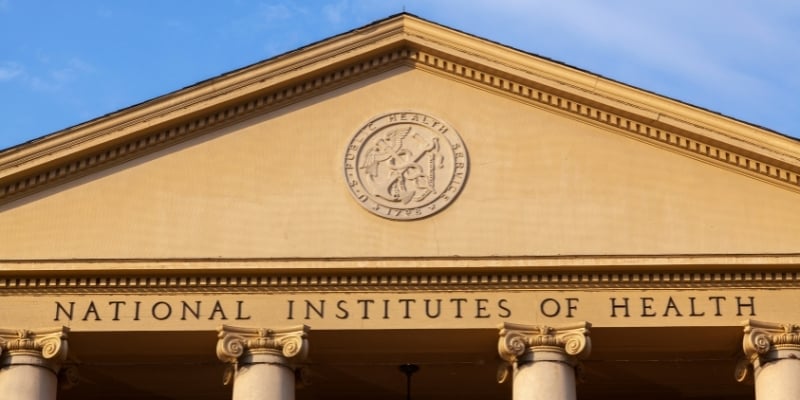Two worlds that are not always directly linked were recently brought together in a panel discussion hosted by the Colorado School of Public Health. The presentation, “National Security and the Impact on Public Health,” explored the often subtle ways that efforts to protect society from diseases, such as COVID-19, intersect with strategies to guard against political and ideological contagions that threaten the social fabric.
The panel discussion on the University of Colorado Anschutz Medical Campus featured four military officers who spoke on behalf of the United States Army Eisenhower Series College Program. The program is part of the work of the United States Army War College in Carlisle, Pennsylvania, founded more than 120 years ago to train officers and advise political leaders on national defense issues. Today, the college “prepares the next generation of senior leaders.”
“We think about how we create forces that we need not just now, but 30 years into the future,” said Colonel Trent Hunton, an assistant professor at the college, who moderated the discussion.
The program offered “a candid discussion with military leaders to help us understand national security issues, which certainly spill over into public health – in obvious and sometimes not so obvious ways,” said ColoradoSPH Dean Dr. Jon Samet in his introduction.
Political extremism is a threat to security and public health
A good part of the question-and-answer session centered on the domestic threat of political extremism, most recently on display during the January 6, 2021, insurrection at the U.S. Capitol, and the current state of hyper-partisanship and increasing polarization among political parties in the United States. The nation is experiencing rural-urban, regional and other divides that can make it more difficult to find political and social common ground. Panelists noted similarities between the sharp political divisions that contributed to the attack and the societal unraveling that spawned civil war in other countries historically.
“I believe this is one of our defining national security threats,” one panel member said. “The bedrock of our power is democracy. The only thing that is going to take away our democracy is us.”
A search for meaning
Reports indicate that approximately 100 of the 980 individuals charged in the January 6 attack had military connections. The great majority of those 100 were veterans. Extremist groups are known for targeting veterans and offering them a sense of meaning, purpose and belonging that they may have lost after leaving the service.
“We want to take the sense of meaning that individuals may find in extremism and put it back into something positive,” said one panel member. Public health assessments and best practices can help to more fully engage and support veterans who may struggle to adapt to civilian life after they leave the service. The three areas of public health that must be addressed are prevention, education, and rehabilitation.
Preventative measures identify individuals with extreme views, while education centers on learning to think critically, and informing individuals of the responsibilities of military service, including accepting limitations on free speech alongside defense of the constitution. Finally, rehabilitation identifies individuals at risk and strives to offer support and meaningful engagement, much as the Veterans Administration helps individuals with substance use disorders.
COVID-19 and the military
The problems of suspicion and mistrust of authority that plagued community efforts to deliver the COVID-19 vaccine also extended to the military. Panelists were clear that the media headlines about the military forcibly vaccinating service members were false. Individuals are not required to take the vaccine, but before the very recent policy change, they were not allowed to continue to serve if they refused.
“We live in close proximity, we’re inside small spaces, and being sick is detrimental to our mission,” said one panelist.
Assisting refugee communities
Colonel Dena Goble, a supervisory management analyst with the Army and student at the Army War College, described in vivid terms the overlap of national security and public health concerns that arose during the August 2021 emergent evacuation of some 85,000 men, women and children from Afghanistan after the United States withdrew its troops.
Goble, who was normally in charge of military police battalions dealing with enemy combatants and detainees, found herself instead working to organize housing, food, and medical care, and the processing necessary to relocate 13,000 refugees placed at Fort McCoy U.S. Army Garrison in Wisconsin.
The Army, working with the Department of Homeland Security, the Department of Defense and dozens of other organizations, labored to ensure the health and safety of the refugees and another 2,000 or so staff on a one-square-mile base that is roughly the size of the Anschutz Medical Campus.
The refugees arrived with a variety of illnesses, many of them contracted during their exposure to unsanitary conditions as they escaped Afghanistan ahead of the Taliban. The maladies included malaria, norovirus, measles, chicken pox, parasitic diseases and, of course, COVID-19. Understandably, problems preventing the spread of COVID-19 and other infections in the tight environment created unforeseen obstacles. A relocation operation slated to take five to seven days instead took five to seven months because of the large number of refugees and the public health complexities involved with a refugee relocation plan.
The experience highlighted three lessons applicable to broader public health and political challenges in the nation and world. The first: no good plan survives the first contact. Second, people’s jobs are part of a “system of systems.” The work at Fort McCoy was but one part of a larger evacuation effort, and the challenges there were also challenges elsewhere. Last, information learned in the classroom will not often translate to the real world—surely an insight that reflects on the challenges of public health workers who must sometimes convince entire communities of people it is in their best interest to change their behaviors.
“In a one-square-mile area, we had to work out communication and adapting to understand each other,” Goble said. “It’s an everyday thing that translates to a larger scale. That can be [an issue] with you and the person sitting next to you if we don’t have a better understanding of one another.”
Defining the military’s role in public health
Samet questioned what role public health plays in the War College curriculum. Colonel Hunton said that public health courses are offered as electives. Samet’s query spurred the panelists to note that military service and public health are distinct, but not entirely separate domains that could benefit from more cooperation and communication.
Colonel Eric Landry, with the Department of National Defence in Canada, underscored the military’s blurred relationship with public health. He noted that at the height of the COVID-19 pandemic, health systems were overwhelmed. In some Canadian provinces, that required sending soldiers into homes to deliver medical care. The job was not typical, nor should it be, he stressed.
The military also got involved when Canada reopened its border with the United States after the pandemic eased. In that instance also, the military’s role in protecting the public health was complementary, not primary.
“The military supplies support for logistics and planning,” he said. “In that, we must understand the public health role.”
Midway through the panel discussion, Landry offered a quote that underscored the benefits of melding work in the national security and public health spheres.
“Great minds don’t think alike,” he said. “They challenge each other to think again.”
Disclaimer: The views and opinions expressed by panelists are a reflection of their research and are not necessarily those of the Department of the Army, the US Army War College, or any other agency of the U.S. government.






